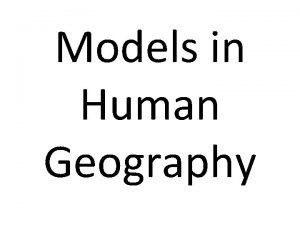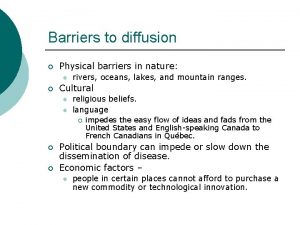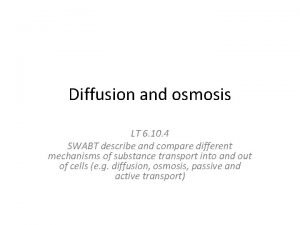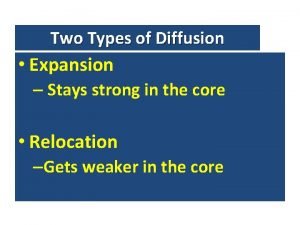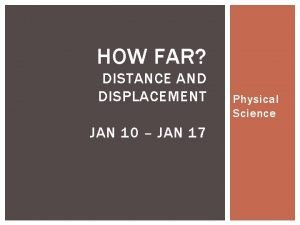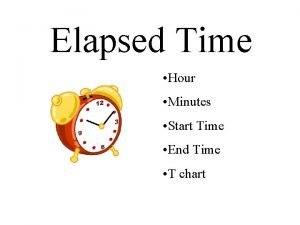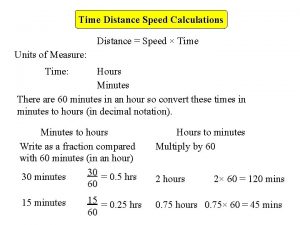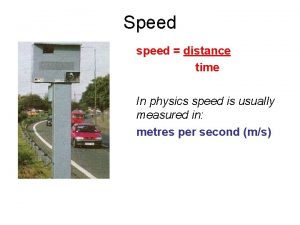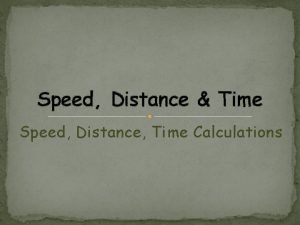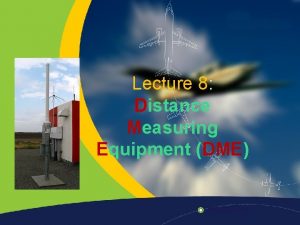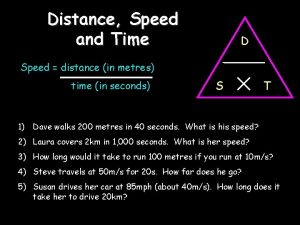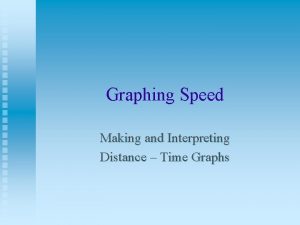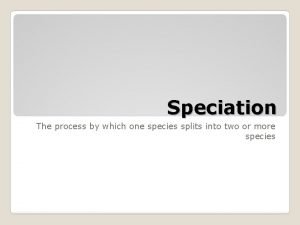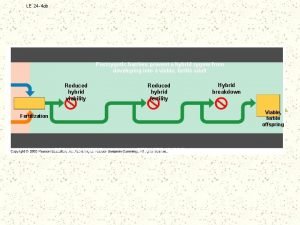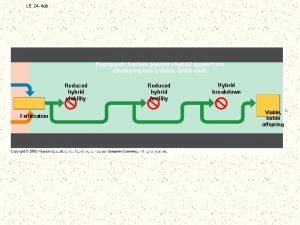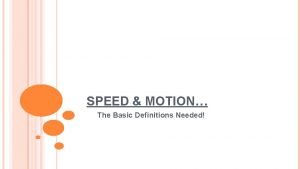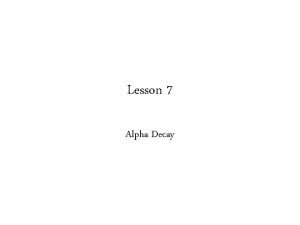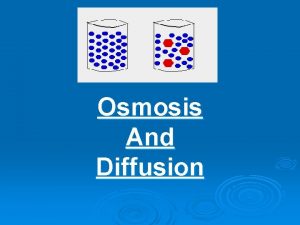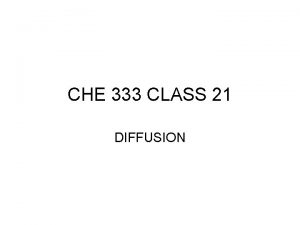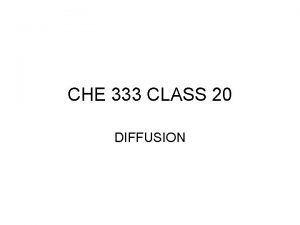BARRIERS TO DIFFUSION TIME and DISTANCE DECAY farther

BARRIERS TO DIFFUSION • TIME and DISTANCE DECAY – farther from the source & the more time it takes, the less likely innovation adopted • CULTURAL BARRIERS – some practices, ideas, innovations are not acceptable/adoptable in a particular culture – e. g. pork, alcohol, contraceptives… • PHYSICAL BARRIERS – physical barriers on the surface may prohibit/inhibit adoption

RELOCATION DIFFUSION Sequential diffusion process in which the items being diffused are transmitted by their carrier agents as they evacuate the old areas and relocate to new ones. The most common form of relocation diffusion involves the spreading of innovations by a migrating population. (de Blij/Murphy – 7 ed. , page R-26) th

Expansion Diffusion EXPANSION DIFFUSION – Spread of an innovation/idea through a population in an area in such a way that the # of those influenced grows continuously larger, resulting in an expanding area of dissemination. (de Blij/Murphy – 7 th ed. , page R-20)

Structural assimilation measures the ability of a minority group to fully integrate into the host society

Ahimsa is a religious tenet shared by Hinduism and Buddhism that discourages violence against others

Acculturation – when smaller/weaker groups take on traits of the larger/dominant culture. Can be 2 -way process – e. g. Aztecs acculturated into Spanish culture, but some Aztec traits remained and became Spanish culture.

The adobe house is ideally suited for a diurnal climate characterized by hot daytime temperatures and cold nighttime temperatures because its thick earthen walls absorb heat in the day and release it at night. This is why adobe is a vernacular architectural style common to the American Southwest, where a diurnal climate is present

Folk Culture Cultural traits such as dress modes, dwellings, traditions, and institutions of usually small, traditional communities Examples? Amish, Mennonites, Hutterites Select areas of LDCs

Popular Culture Cultural traits such as dress, diet, and music that identify and are part of today’s changeable, urban-based, media-influenced western societies. Examples? Blue jeans Hip Hop

Folk cultures are more homogeneous than popular cultures because they belong to smaller groups of individuals who share a common local environment, a common history, and common values. Unlike popular cultures, folk cultures are more insulated, less exposed to outside influences, and less liable to frequent changes over time

A dialect is a particular form of a language that is peculiar to a specific region or social group. A dialect represents a cultural trait, a single aspect of an overarching cultural complex

Neolocalism – seeking out regional culture and reinvigorating it (ex. Little Sweden in Kansas) Commodification of a culture can compromise authenticity becoming a stereotype –examples? – Cherokee – Branson, Mo – Guinness and the Irish Pub Co.

A built industrial landscape that shows evidence of abandonment, disinvestment, and general neglect is considered derelict. Derelict landscapes can range from vacant housing complexes in disrepair to abandoned factories to littered and overgrown recreational fields

Distance Decay Graph Learn to think about distance decay in a “spatial” context Think of distance decay in terms of an ‘x’ and ‘y’ axis

A dogtrot house, which features a covered breezeway situated in between two separately enclosed cabins, was a popular vernacular house style in the American South before airconditioning. The central breezeway, which channeled air currents through the covered space, provided a relatively cool, partially enclosed living area during summer months

Landmarks are distinctive points of reference, such as a clock tower or billboard sign, that help individuals orient themselves in familiar space

Nodes are points of intersection, such as a bridge or city square, which help individuals navigate through familiar spaces

Local Culture Local culture – group of people in a particular place who see themselves as a collective or community, who share experiences, customs, and traits, and who work to preserve those traits and customs in order to claim uniqueness and to distinguish themselves from others


Kinds of Expansion Diffusion Hierarchical Diffusion – spread of an idea through an established structure usually from people or areas of power down to other people or areas

Examples of Hierarchical Diffusion i. Phones (as do most new technologies) diffused hierarchically. i. Phones, though cheaper, may still be too expensive for most consumers to buy; therefore diffusing hierarchically AIDS is typically viewed as hierarchical because if its historically distinctive URBAN to URBAN diffusion pattern Fashion trends diffuse classically from URBAN to URBAN area

This is a map of the diffusion of _______? Human Geography, Knox & Marston, 2 nd Edition – page 45

Expansion Diffusion Contagious Diffusion – spread of an idea/trait/concept through a group of people or an area equally without regard to social class, economic position or position of power.

Diagram of Contagious Diffusion Human Geography, de. Blij & Murphy, 7 th ed. Page 28 ‘A’ is a diagram of contagious diffusion. Notice virtually all ‘adopt. ’ ‘B’ is a diagram of hierarchical diffusion. Notice the leapfrogging over some areas.

Expansion Diffusion Stimulus Diffusion – the spread of an underlying principle even though the characteristic itself does not spread. • OR Stimulus Diffusion - involves the transfer of an underlying concept or idea, without the specific accompanying traits due to some cultural or other barrier to the movement of the idea

An example of Stimulus Diffusion Mc. Donald’s spread to India; however, Indian Hindus do not eat beef. Indian Mc. Donald’s serve veggie burgers, which is culturally acceptable. The idea (Mc. Donald’s burgers) was acceptable, but not in its original form – hence stimulus diffusion.

Relocation Diffusion This occurs when the people migrate and take their cultural attributes with them.

Relocation and Expansion – In Review Human Geography, Fellmann, Getis & Getis, 8 th ed. Page 55 ‘A’ is relocation diffusion as the person goes. ‘B’ is expansion diffusion as the idea/trait moves or transports.

AIDS and Relocation Diffusion Some authors suggest AIDS diffuses through relocation diffusion. This is true by the fact that the diffusers “take” the disease with them. However, AIDS is not contracted by everyone in its path. More importantly, the pattern of AIDS diffusion is more classically hierarchical (and therefore expansion).

Migrant Diffusion (a form of Relocation Diffusion) Migrant Diffusion is when an innovation originates and enjoys strong, but brief, adoption there. The innovation may travel long distances (& be thriving), but could be faded out back at the point of origination – e. g. influenza in China will reach the U. S. , but the epidemic could be over in China by the time it takes hold in the U. S.

One more look…Wal-Mart as both contagious and reverse hierarchical diffusion – WHY? Human Geography, Fellmann, Getis & Getis, 8 th Ed. Page 57

How about another example of reverse hierarchical diffusion?

What about Soccer?

Nicholas Christakis: How social networks predict epidemics http: //www. ted. com/talks/nichol as_christakis_how_social_netwo rks_predict_epidemics. html

Random Thoughts on Diffusion Expansion Diffusion Contagious Does not need have a specific pre-existing structure for transmission Disease contagion is a prime example Don’t forget the orange scent spreading around the room Hierarchical requires a pre-established structure to channel the flow ie 'chain of command' or network of power Relocation Diffusion Movement of people and things Europeans moved to the Americas and brought their culture with them

How did you become a “knower” of your favorite kind of music? – Where is its hearth? – How did it reach you? – What type of diffusion?
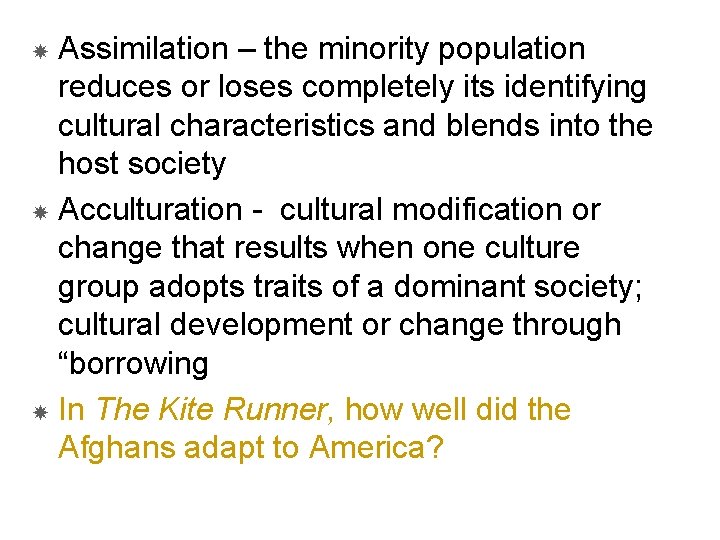
Assimilation – the minority population reduces or loses completely its identifying cultural characteristics and blends into the host society Acculturation - cultural modification or change that results when one culture group adopts traits of a dominant society; cultural development or change through “borrowing In The Kite Runner, how well did the Afghans adapt to America?

Rural Local Cultures Hutterites Branch of Anabaptists absolute pacifism Live in rural, self-sufficient “colonies” Forbid use tv, radio Usually only 1 telephone for the community Avoid pictures


Urban Local Cultures Ethnic Neighborhoods – Hasidic Jews Pious Distinctive clothes Speak Yiddish Do not watch tv, but will listen to radio Other Urban Local Culture examples – Italian neighborhoods, Chinatowns, Mexican, Russian, Polish
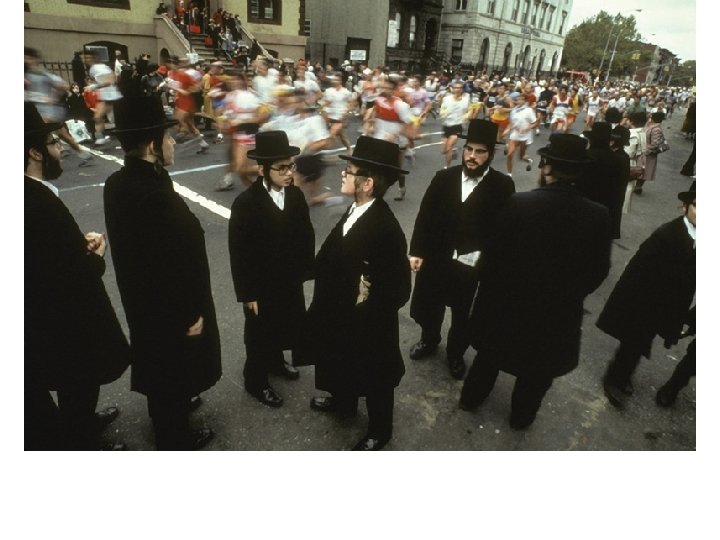
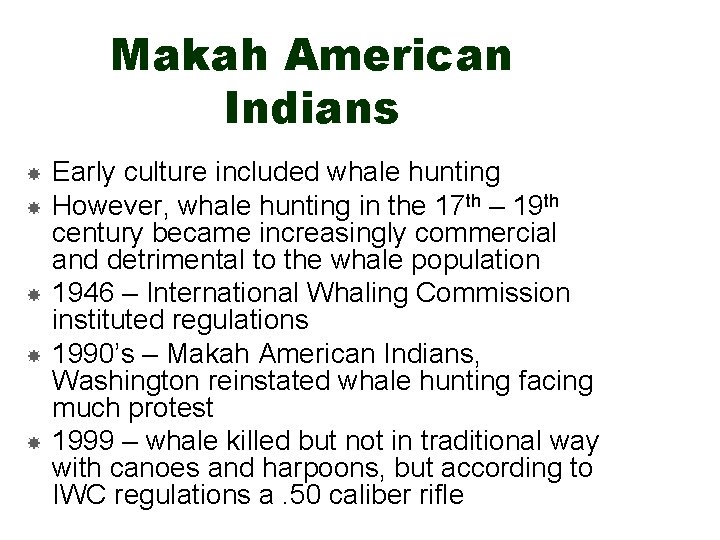
Makah American Indians Early culture included whale hunting However, whale hunting in the 17 th – 19 th century became increasingly commercial and detrimental to the whale population 1946 – International Whaling Commission instituted regulations 1990’s – Makah American Indians, Washington reinstated whale hunting facing much protest 1999 – whale killed but not in traditional way with canoes and harpoons, but according to IWC regulations a. 50 caliber rifle

Material folk culture regions Each region possesses many distinctive items of material culture – Quebec French folk region-grist windmills with stone towers, and a bowling game played with small metal balls – Mormon folk culture — distinctive hay derricks and gridiron farm villages – Western plains ranching folk culture — the “beef wheel, ” a windlass used during butchering

Quebec Petanque, a bowling game played with metal balls, diffused to Canada with French immigrants in the 16 th century. It has persisted as one aspect of Quebec French folk region.
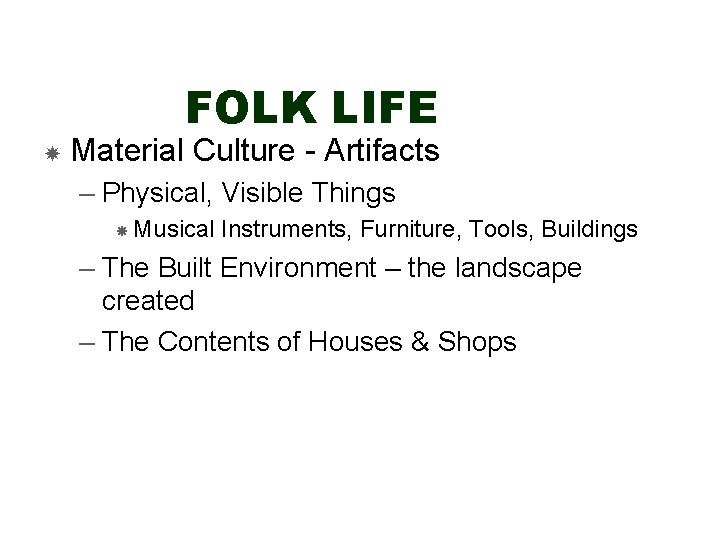
FOLK LIFE Material Culture - Artifacts – Physical, Visible Things Musical Instruments, Furniture, Tools, Buildings – The Built Environment – the landscape created – The Contents of Houses & Shops
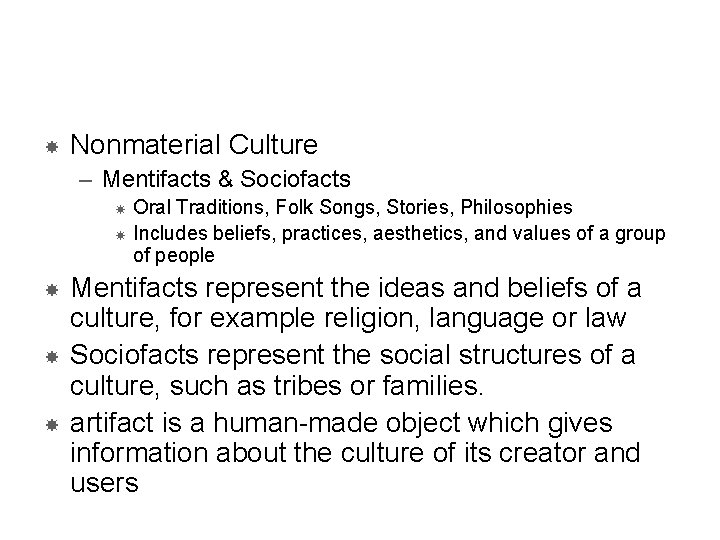
Nonmaterial Culture – Mentifacts & Sociofacts Oral Traditions, Folk Songs, Stories, Philosophies Includes beliefs, practices, aesthetics, and values of a group of people Mentifacts represent the ideas and beliefs of a culture, for example religion, language or law Sociofacts represent the social structures of a culture, such as tribes or families. artifact is a human-made object which gives information about the culture of its creator and users

American folk Music music began as transplants of Old World songs – Northern song Featured unaccompanied solo signing in clear hard tones Featured Fiddle or fife-and-drum – Southern, Backwoods, and Appalachian song Featured unaccompanied high pitch and nasal solo singing Marked by moral and emotional conflict Roots of country music – Western song Factual, narrative songs Themes of natural beauty, personal valor, and feminine purity Some songs reworked as lumberjack ballads
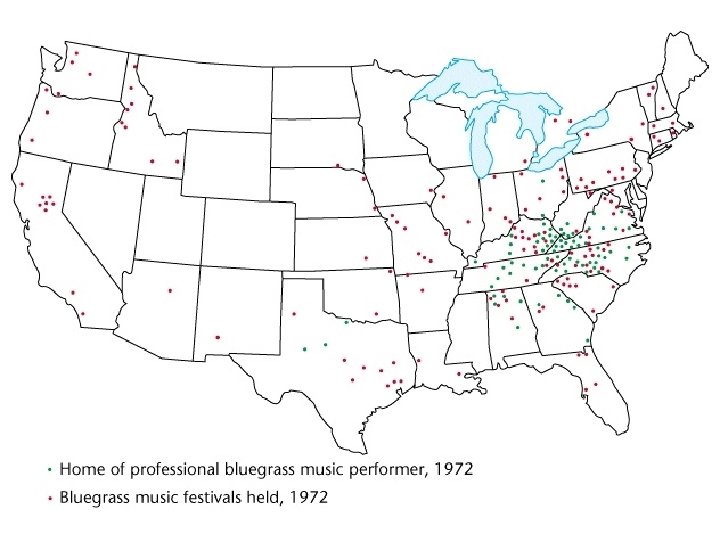
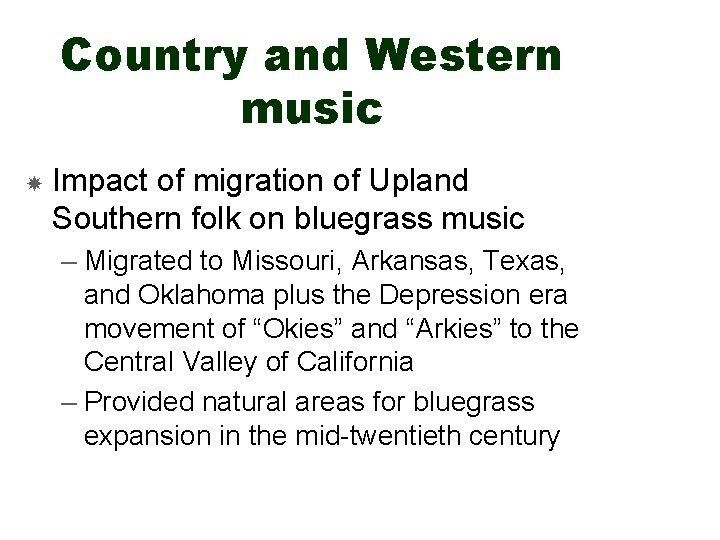
Country and Western music Impact of migration of Upland Southern folk on bluegrass music – Migrated to Missouri, Arkansas, Texas, and Oklahoma plus the Depression era movement of “Okies” and “Arkies” to the Central Valley of California – Provided natural areas for bluegrass expansion in the mid-twentieth century
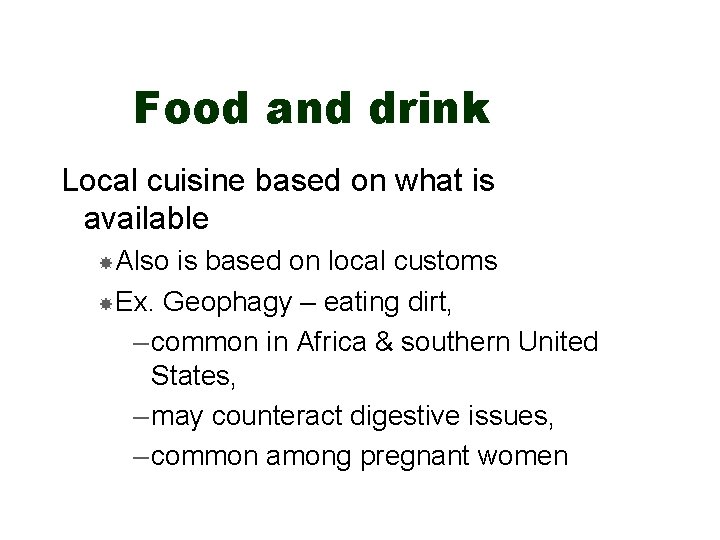
Food and drink Local cuisine based on what is available Also is based on local customs Ex. Geophagy – eating dirt, – common in Africa & southern United States, – may counteract digestive issues, – common among pregnant women
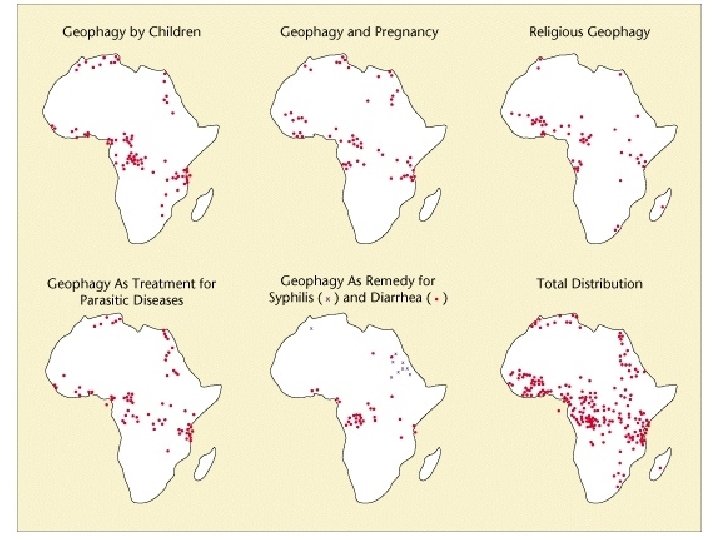
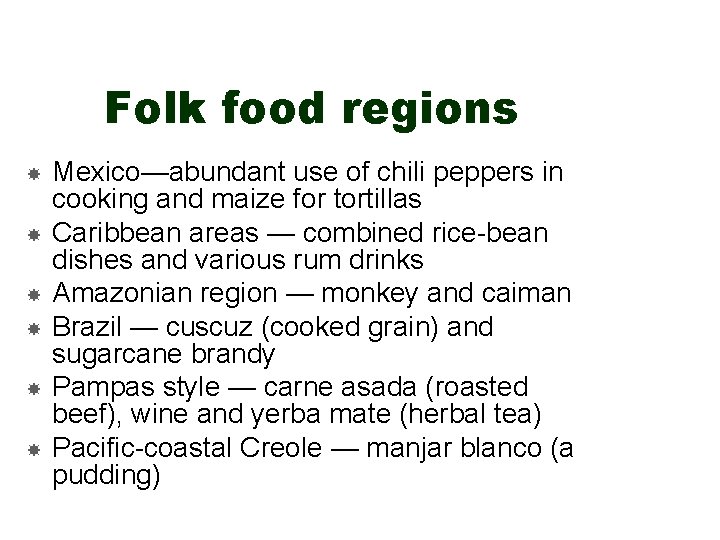
Folk food regions Mexico—abundant use of chili peppers in cooking and maize for tortillas Caribbean areas — combined rice-bean dishes and various rum drinks Amazonian region — monkey and caiman Brazil — cuscuz (cooked grain) and sugarcane brandy Pampas style — carne asada (roasted beef), wine and yerba mate (herbal tea) Pacific-coastal Creole — manjar blanco (a pudding)
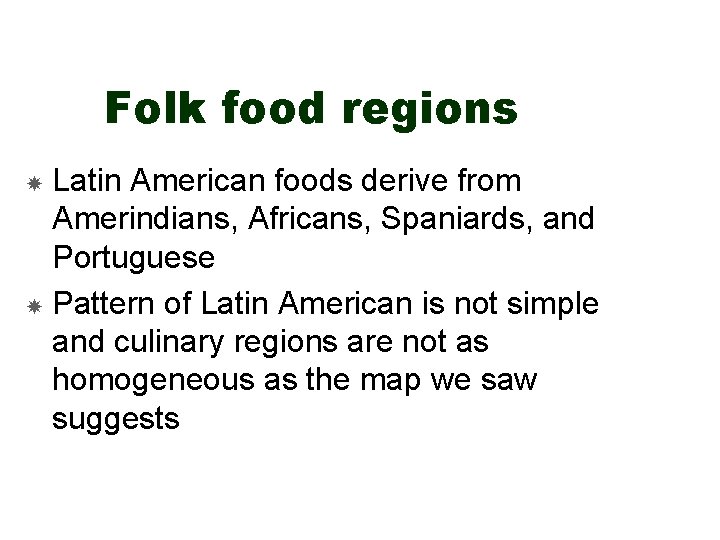
Folk food regions Latin American foods derive from Amerindians, Africans, Spaniards, and Portuguese Pattern of Latin American is not simple and culinary regions are not as homogeneous as the map we saw suggests


Folklore regions Displays regional contrasts in much the same way as material folk culture Folk geographers consider diverse nonmaterial phenomena as folktales, dance, music, myths, legends, and proverbs Most thoroughly studied in Europe – First research appeared early in the nineteenth century – We know more about vanished folk cultures than surviving ones – Example of Switzerland
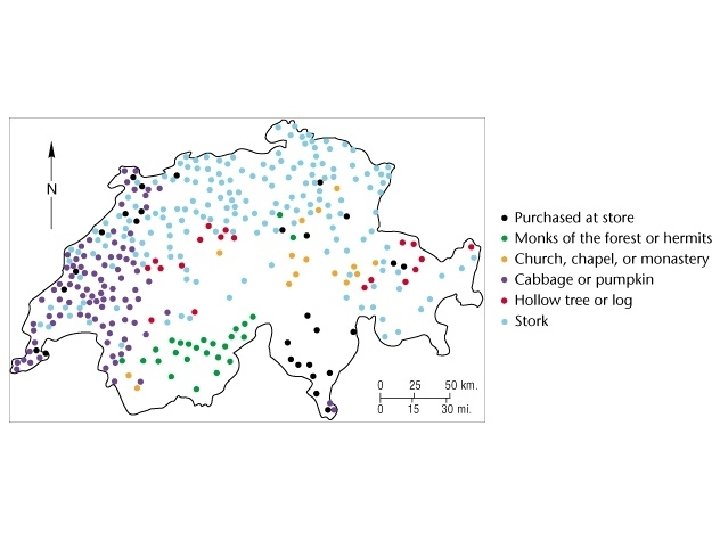
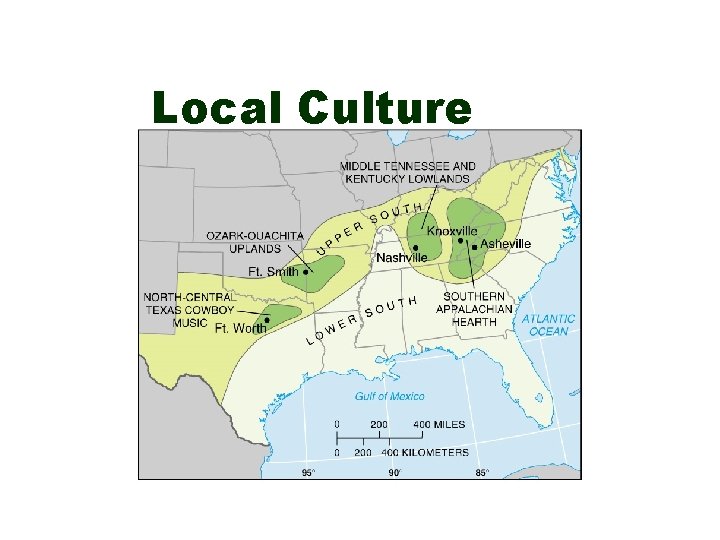
Local Culture
- Slides: 57


